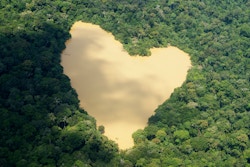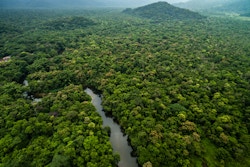Southeast Asia and Oceania: Rainforest under pressure
The rainforests of Southeast Asia and Oceania are among the richest and most complex ecosystems there are. Despite historically high deforestation, in recent years this is starting to turn. Yet, pressure on the region’s rainforests from palm oil plantations, mining and logging remain.

The rainforests of Southeast Asia and Oceania are threatened. Nonetheless, Southeast Asia is home to the greatest number of people who depend on the rainforest.

Southeast Asia is home to the greatest number of people who depend on the rainforest, with great natural and cultural diversity.
The rainforests in this region are under tremendous pressure, with large, contiguous forests remaining mainly on the islands of Borneo and New Guinea. Previously, the entire region was covered by lush rainforest.
Many countries in Southeast Asia and Oceania have some rainforest, but those with the largest remaining forests are Indonesia and Papua New Guinea.
This region’s rainforests are among the most complex and species-rich ecosystems in the world. Southeast Asian rainforests are renowned for the elephants and orangutans that live in them, and more than 3,000 species of plant have been registered.
How we work in Southeast Asia and Oceania
Since Rainforest Foundation Norway (RFN) began working in Southeast Asia in 1997, we have initiated a range of projects together with local partners in Indonesia and Papua New Guinea.
Our main focus in this region has been to work for sustainable forest management and supporting forest peoples to secure their land rights. That is because, in our experience, the forest is best preserved where the rights, including land rights, of its traditional populations are recognized and upheld.
We support the struggle of forest peoples to secure their land rights and to make their voices heard.
Our partners are dedicated organizations that maintain close contact with local communities at risk of losing their traditional territories as a result of legal or illegal deforestation. We also work to support forest people with recognition of their rights and sustainable use of their traditional lands. Through capacity sharing, culturally adapted education and legal training, we seek to strengthen the role of forest communities in protecting their forest from destruction.
We also work to help forest peoples obtain exclusive rights to use their traditional lands. Through capacity building, culturally adapted education and legal training, we seek to strengthen the role of forest communities in protecting their forest from destruction.

UP IN SMOKE: Oil palm plantations are the main reason Indonesia’s rainforests are disappearing.
Deforestation and changing trends
Logging companies searching for valuable tropical wood in Papua New Guinea have proliferated. Mining, dam construction and other infrastructure development are also destroying rainforests across the region.
Forest peoples whose livelihood depends on the rainforest are those who suffer most when the forest is wiped out.
Over the last four decades, the two largest rainforest countries in the region – Indonesia and Papua New Guinea – have experienced a massive expansion of plantation, logging and mining activities. However, in recent years Indonesia has succeeded in drastically reducing its rates of deforestation - a promising trend.





